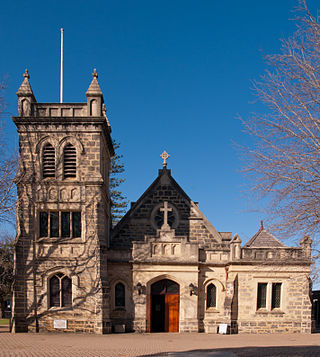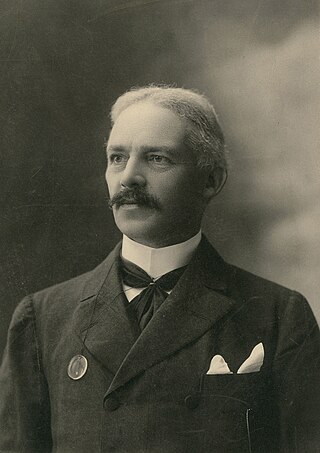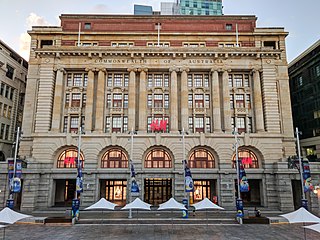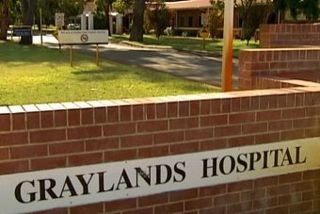
The Swan River is a major river in the southwest of Western Australia. The river runs through the metropolitan area of Perth, Western Australia's capital and largest city.

Fremantle is a port city in Western Australia located at the mouth of the Swan River in the metropolitan area of Perth, the state capital. Fremantle Harbour serves as the port of Perth. The Western Australian vernacular diminutive for Fremantle is Freo.

Claremont is a western suburb of Perth, Western Australia, on the north bank of the Swan River.

Applecross is an affluent riverside suburb of Perth, Western Australia, bounded by Canning Highway and the Swan River. It is located within the City of Melville.

The Canning River is a major tributary of the Swan River in the South West Land Division of Western Australia. It is home to much wildlife including dolphins, pelicans, swans and many other bird species.

Stirling Highway is, for most of its length, a four-lane single carriageway and major arterial road between Perth, Western Australia and the port city of Fremantle in Western Australia on the northern side of the Swan River. The speed limit is 60 km/h (37 mph). East of Crawley, it continues as Mounts Bay Road which links Crawley and the nearby University of Western Australia to the Perth central business district.

Point Walter is a point on the Swan River, Western Australia, notable for its large sandbar that extends into the river. It is located on the southern shore of Melville Water, and forms its western end. Point Walter is located in the suburb of Bicton, approximately 12 kilometres (7 mi) southwest of the Perth central business district, and 7 kilometres (4 mi) north-east of Fremantle, and is on the opposite side of the river to the suburbs of Mosman Park, Peppermint Grove, and Dalkeith.

Point Belches is a small point on the south side of Swan River, Western Australia, about 250 metres (820 ft) east of the Narrows within the area known as Perth Water. The land is part of the South Perth Esplanade, and the water off the point is used as a commercial water skiing area.

Melville Water is a significant section of the Swan River in Perth, Western Australia. It is located west and downstream of Perth Water, from which it is separated by the Narrows Bridge.

The Fremantle Arts Centre is a historic building complex on Ord Street in Fremantle, Western Australia.
Perth is the capital city of Western Australia. It was established by Britain as the Swan River Colony in 1829. The area had been explored by Europeans as early as 1697, and occupied by the Indigenous Whadjuk Noongar people for millennia.

The All Saints Church in Henley Brook is the oldest church in Western Australia. It was built by Richard Edwards between 1838 and 1840, with the first service taking place on 10 January 1841. The site is on a small hill overlooking the Swan River and near the conjunction of the Swan and Ellen Brook. This site was where Captain James Stirling camped during his 1827 exploration of the area.

George Thomas Temple-Poole was a British architect and public servant, primarily known for his work in Western Australia from 1885.

The General Post Office is a heritage landmark building in Perth, Western Australia. Located on the western side of Forrest Place in the city's central business district, its imposing stone facade is in the Beaux-Arts style. The building was completed in 1923 after almost a decade of construction, which was protracted by World War I and the resulting shortages of construction materials. At the time of its opening, it was the largest building in Perth.

William Burden Hardwick, often referred to professionally as W.B. Hardwick, was an Australian architect who from 1917 until 1927 was Principal Architect of the Public Works Department in Western Australia. The Encyclopedia of Australian Architecture refers to Hardwick as being "well known for continuing the high standards of design in public buildings established during the gold boom, particularly in hospitals, schools and post offices throughout the state".

Sunset Hospital is a former hospital and aged care facility located in Dalkeith, Western Australia. Built in 1906 as the Claremont Old Men's Home, it once housed up to 750 men. The design was based on a military model, made from large stone blocks quarried from local limestone with accommodation for 400 men. It included an infirmary and a hospital.

Swanbourne Hospital is a heritage listed former mental hospital located in Mount Claremont, Western Australia. Built in 1904, it was the largest stand-alone psychiatric hospital in Western Australia for much of the twentieth century until its closure in September 1972. The hospital was originally known as Claremont Hospital for the Insane, Claremont Mental Hospital and Claremont Hospital. Following the closure of Claremont Hospital in 1972, the original 1904 section of the hospital functioned as the Swanbourne Hospital until 1985. The site was vacant from 1986, until renovated and reopened primarily as an aged care residence in 2018.

Graylands Hospital is Western Australia's largest mental health inpatient facility, and the only public stand-alone psychiatric teaching hospital. It is located on a 10-hectare (25-acre) site in Mount Claremont, in a suburb formerly known as Graylands, after which the hospital was named. The suburb was named after Maria Gray, who inherited the land from her brother-in-law James Harding before 1896. The hospital has 178 beds, including 30 beds in the Frankland Centre, and 320 nurses on staff.
Whitby Falls Hospital is a former hospital for the mentally ill located in Mundijong, Western Australia. Until its closure in 2006 it was the longest operating facility in Western Australia for the care and treatment of mental illness.

Claremont Post Office is a heritage-listed post office at Bayview Terrace, Claremont, Western Australia, Australia. It was added to the Australian Commonwealth Heritage List on 22 June 2004.





















